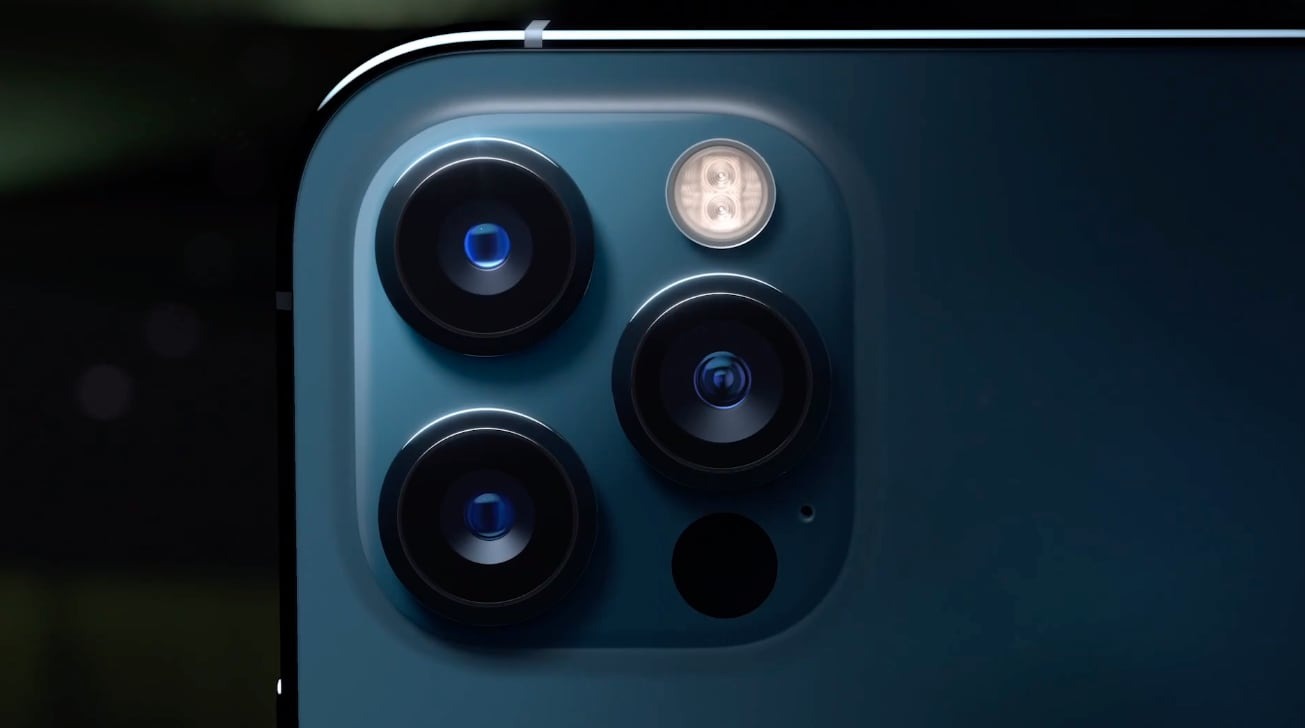Low-light performance of iPhone 12 Pro aided by wider ISO range & aperture
The wide-angle cameras in the iPhone 12 Pro have improved low-light photography, with a readout of the new iPhone's cameras showing an improvement to the ISO, paired with a wider aperture.
During Apple's "It's Speed" iPhone event, the company spent time highlighting the low light capabilities of the 12-megapixel cameras on the back of all of the models, in part driven by a 27% wider aperture. A technical readout of the cameras on the iPhone 12 Pro by camera app Halide goes into more technical detail about the changes photographers can expect when they get their hands on the new model.
The readout of the ultra-wide and wide-angle cameras posted to Twitter by Matthew Panzarino using the Halide app and picked up by the developers shows the three cameras on the back of the iPhone 12 Pro as having the same 12-megapixel resolution, and are all capable of creating an image with a resolution of 4,032 by 3,024.
And here's the iPhone 12 Pro technical readout!
— Halide (@halidecamera) October 20, 2020
We're seeing quite an ISO improvement on the Wide sensor. Interesting. This along with the new f/1.6 aperture would explain its great low light photography. https://t.co/tm7MK2qEXy
The major difference highlighted by Apple itself is the wider aperture on the wide-angle camera of f/1.6, up from the f/1.8 aperture of the same camera in the iPhone 11, meaning the new model lets more light hit the sensor. The telephoto and ultra-wide cameras have apertures of f/2.0 and f/2.4 respectively.
There is also a difference in the ISO, with the wide camera having a range of ISO 33 to ISO 5,808, while the telephoto ranges from ISO 23 to ISO 2,208 and the ultra wide at ISO 24 to ISO 2,304. all of the ranges are wider than the iPhone 11 and iPhone 11 Pro range equivalents.
ISO is a reference back to times when film was predominantly used in cameras, with different ISO levels equating to more sensitive films that need less light for an image, with digital cameras using the term to refer to a sensitivity setting for the sensor. A wider ISO range will generally allow a camera to capture photographs over a wider range of scene brightnesses.
The focal length of each camera of 13mm, 26mm, and 51mm equivalents are unchanged from the previous generation, as are the Phase and Contrast autofocus systems, again with the ultra-wide only using Phase autofocus. The app also lists the minimum and maximum exposure of the wide camera as 1/71,000 of a second to 1 second, while the telephoto and ultra-wide range from 1/45,000 of a second to 1 second.
While the specifications largely relate to the iPhone 12 Pro, the ultra wide and wide specifications are expected to be the same for the iPhone 12.
There are some changes to the cameras that aren't mentioned in the app that are still worthy upgrades. For example, while the 5-element lens in the ultra wide camera is unchanged, the wide-angle version has been upgraded to use a seven-element version, which should improve the quality of the lens and how it affects the final image.
Other announced changes include Smart HDR 3, the ability to record Dolby Vision HDR and 10-bit HDR, and for the Pro range, LiDAR-assisted focus, Sensor Shift OIS, and Apple ProRAW support.
The iPhone 12 Pro Max also has a slightly narrower telephoto aperture of f/2.2, but makes up for it with a 2.5x optical zoom in and 5x optical zoom out instead of the 2x and 4x zooms of the iPhone 12 Pro, and a 12x digital zoom instead of 10x.
 Malcolm Owen
Malcolm Owen












 William Gallagher and Mike Wuerthele
William Gallagher and Mike Wuerthele
 Christine McKee
Christine McKee
 William Gallagher
William Gallagher

 Marko Zivkovic
Marko Zivkovic









